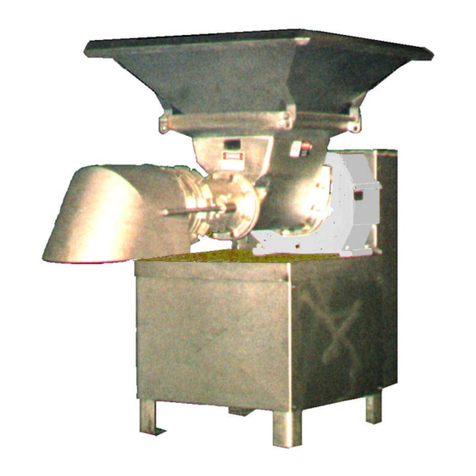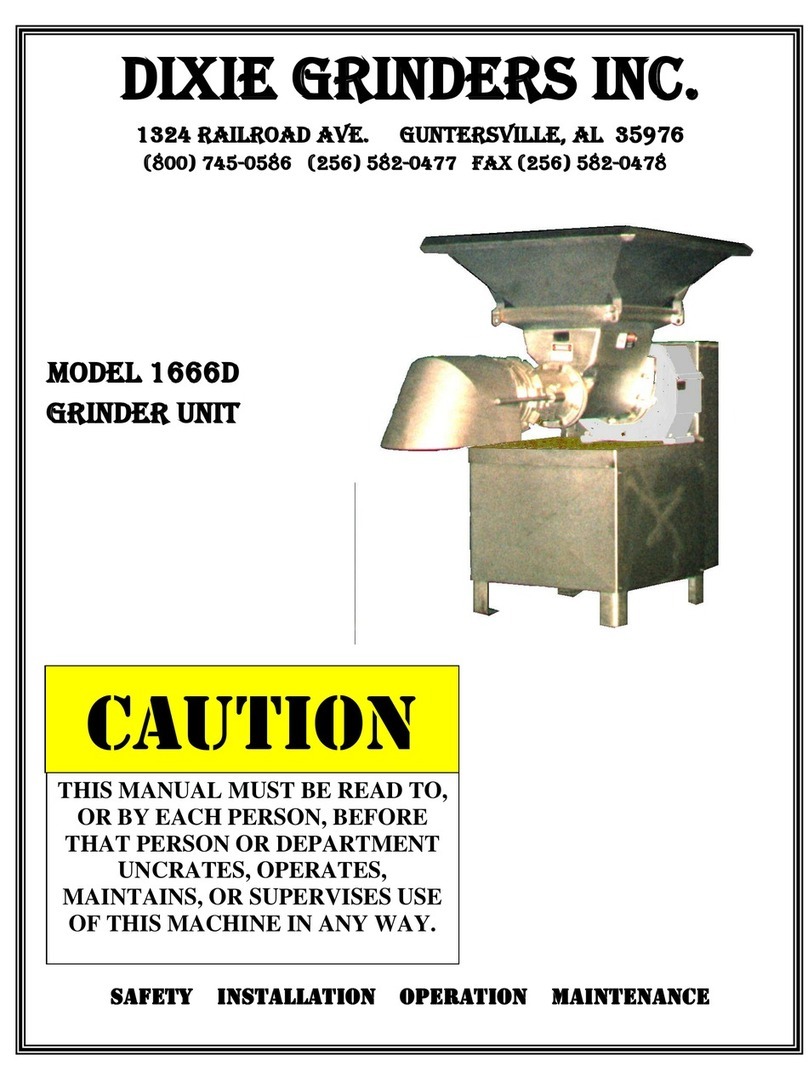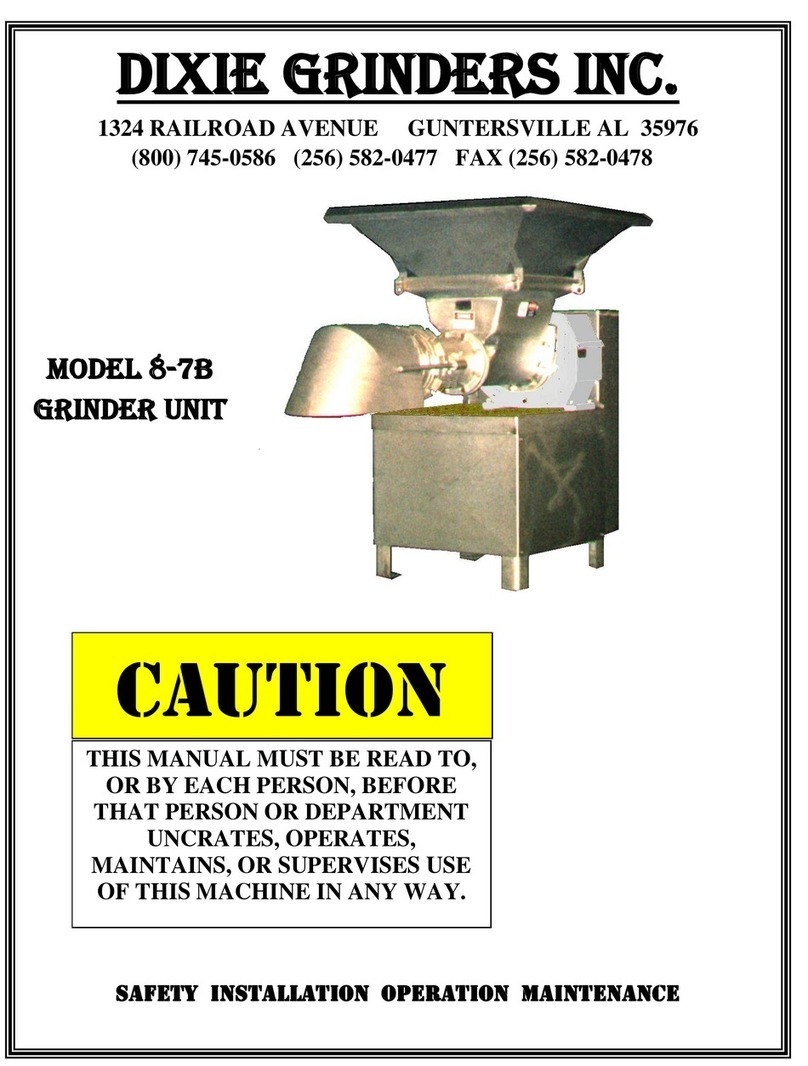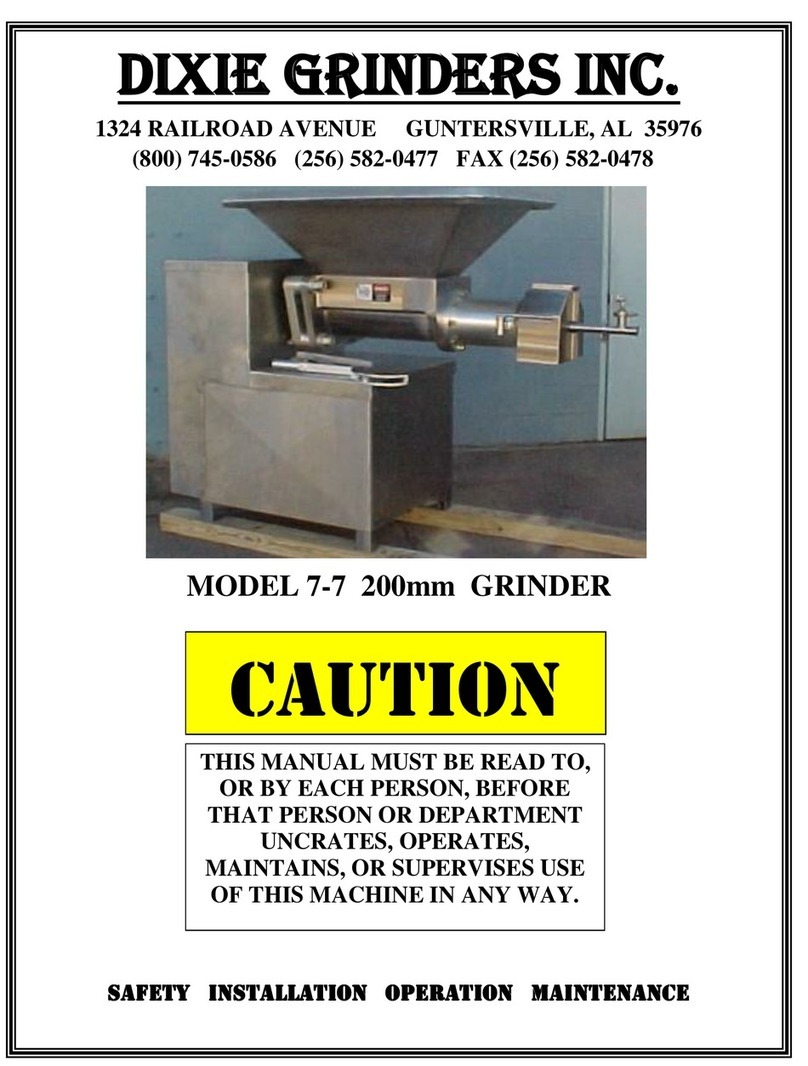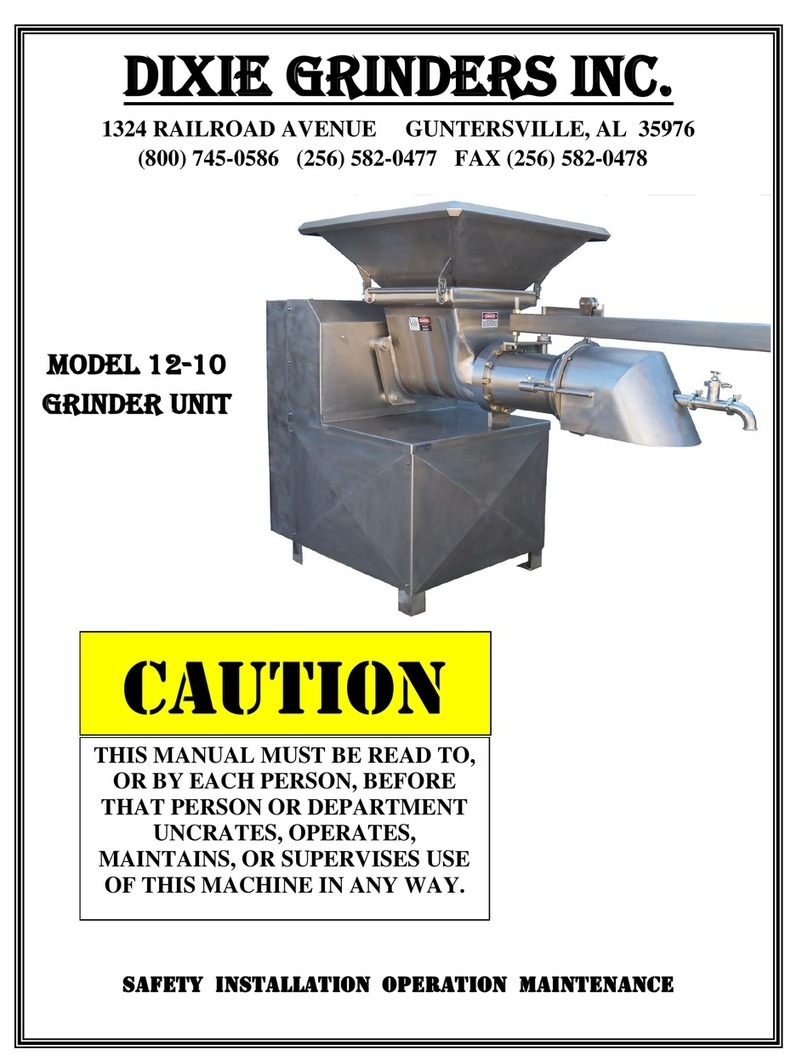
ROTATION: When the grinder unit has
been disassembled, and then wired
according to all applicable codes and
regulations, rotation can be checked. Do
not turn the unit on until you are positive
that no one is in harms way! The grinder
feedscrew should turn counterclockwise!
After the rotation has been checked
LOCK OUT THE POWER!
SANITATION: Appropriate clothing
should be worn, and all safety precautions
should be taken before cleaning any
equipment. Typical grinder units have tin
plated feedscrews, heads, rings, and often
the grinder hopper is also tin plated. Before
you begin to clean your machine, make sure
any commercial cleaning agents are
approved for cleaning tin plated surfaces.
If no mention of tin is on the label but the
cleaner is not recommended for aluminum
do not use it unless you have contacted the
cleaner manufacturer for their
recommendations. Do not use high pressure
streams of water to clean a grinder unit. It
is possible to drive water past the oil seals
and damage the gearbox.
Do not allow any cleaning agent to sit on the
tin plated surfaces for an extended period of
time. Apply the soap, and rinse it off
immediately!
After cleaning, rinse the unit with large
quantities of hot water. We strongly
recommend drying the unit and applying a
liberal amount of mineral oil to all tin plated
surfaces. If the machine is not going to be
used for an extended period, apply a coat of
edible grease to all surfaces and wrap the
grinder in plastic.
SANITIZERS: Iodine sanitizers. Iodine
reacts with tin. If the Iodine is in sufficient
strength and has been on the tin plated
surfaces long enough it will turn anything
that touches the surface deep purple. Other
sanitizers also may react with tin plated or
stainless steel surfaces. Check label
instructions before using. If you notice that
the tin plating is coming off of your grinder
unit contact Dixie Grinders Inc.
UNIT ASSEMBLY: Please study all of the
grinder parts shown on the exploded view
before you attempt to assemble the grinder
unit. The exploded view is at the rear of the
maintenance instructions. (These instructions
assume that the grinder unit has not been
disassembled any further than the instructions
already given.)
MAKE SURE THE POWER IS
STILL LOCKED OUT BEFORE
ASSEMBLY.
Step 1. INSTALL FEEDSCREW.
Using the Model FSP2001 feedscrew puller,
or other device, install the feedscrew into the
grinder unit. Do not attempt to install the
feedscrew by hand, or by yourself. You will
notice that when using the FSP2001 the
feedscrew usually engages on the drive spline
with little effort. If you are not using the
FSP2001 it will be necessary to use the
handle end of the ring wrench.


